Supporting materials
Recipe for how to extract cabbage juice (Word document)
Recipe for how to extract cabbage juice (PDF file)
Download
Download this article as a PDF

In Sweden there lives a small, green dragon called Berta, who invites young children to join her adventures in Dragon Land – all of which are about chemistry.
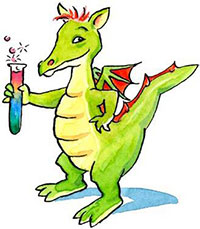
At the NAVET Science Center in Borås, Sweden, we created Berta the Dragon as a way of introducing science to very young children (4-8 years). The dragon character is a hand puppet who teaches children about the wonderful world of chemistry through experiments, using Berta’s own stories as a starting point. The first stories about Berta were so popular that they were published in 2010 as a book, Berta’s Book of Experiments: Exciting chemical fairy tales from Dragon Land. A second Berta book has since followed.
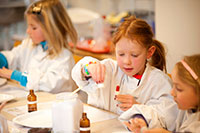
The aim of all Berta’s activities is to promote the understanding and use of chemistry in real life, with everyday materials that are familiar to everyone. The materials are non-toxic and most of them are easy to find on grocery shelves, so children can handle them without complicated or expensive laboratory equipment.
The experiments cover many different areas of chemistry – such as solutions, gases, and acids and alkalis – and are all designed to be done not just in science centres or schools, but also at home.
All the Berta activities have been tried out with young children many times over several years to ensure that they are interesting and easy to do. When we choose activities for Berta and her young experimenter friends, we always look for these key elements:
– Safety: can the children safely experiment with the ingredients, even if some of them happen to end up in their mouths (it doesn’t matter if they taste bad – but they have to be edible to find this out)?
– Child appeal: are the results fun, clear enough to see or touch, and a bit unexpected or even amazing?
– Exploration: does the chemistry raise interesting questions, and will it lead to new experiments and experiences?

There also needs to be an element of interacting with other people, as this is often the way we learn the most. Some of the experiments are most successful when carried out with a large group of children gathered around an activity, discussing, exploring and pouring in ingredients together as we go along; others work best with pairs of children or smaller groups.
In this article we describe three popular activities that are typical of Berta’s style. While the experiments are different all three share the same characteristic for making the familiar intriguing.
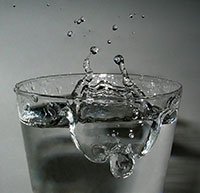
Age-group: 4-8 years
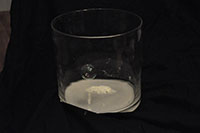
Pour some water over the mixture: where does the sound come from?
When water is added, the sodium hydrogen carbonate and citric acid dissolve in it and start reacting. Carbon dioxide gas is produced, which makes a distinct fizzing sound as the gas spreads through the container.
Carbon dioxide gas is denser than the surrounding air so it doesn’t all float away, but there is still a chance of it escaping due to turbulence in the air (and it’s really hard to see where it goes as it has no colour). This is why we put the paper over the container and keep it there until all the gas is formed and everything is ready for the bubbles. The soap bubbles contain air, so they have a lower density than the carbon dioxide gas; this means they float on top of the gas, showing that it’s there and where it ends.
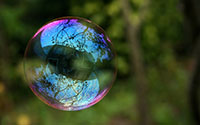
If a soap bubble floats for a while, you’ll see that it slowly increases in size. This is because carbon dioxide gas travels into the bubble faster than air travels out. This also makes the bubble heavier, and it will eventually sink to the bottom of the gas layer.
What will happen if carbon dioxide gas is formed inside a plastic bag?
Age-group: 4-8 years
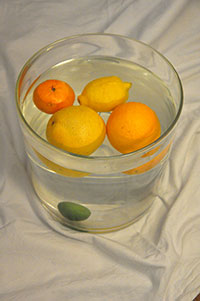
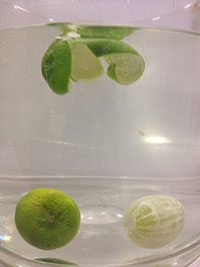
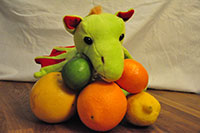
Most whole citrus fruits float in water, but this changes once their peel is removed. The intact fruits float because of the large amounts of air held in the spongy white pith, which gives them a lower density than the peeled fruits. If the peel is removed in one piece, we can put it on and take it off like a life jacket, and it becomes obvious that it is the peel that is making the difference to the fruit’s buoyancy.
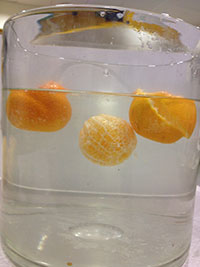
The difference between lemons and limes is interesting in this respect. Both fruits have a density very close to that of water. However, limes always sink as they have a density slightly higher than water (because they have hardly any white pith), whereas lemons sometimes float and sometimes sink, depending on how much pith the fruit contains.
What will happen if we try other fruits and vegetables in the same way?
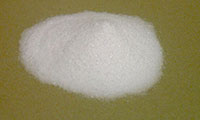
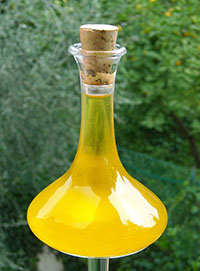
Watch the vase closely. What kinds of bubbles are rising to the top? Where do they go after reaching the surface?
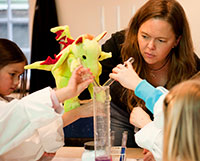
The sodium hydrogen carbonate at the bottom of the vase contains some air trapped in the powder. When the vegetable oil is poured on top of it, the air forms bubbles that rise to the surface. Red cabbage and blueberries contain natural dyes that are sensitive to changes in acidity, and they both become red when mixed with lemon juice, which is acidic (pH 3). The red juice droplets sink through the vegetable oil because they contain mostly water, which has a higher density than the oil. Once the acidic juice hits the sodium hydrogen carbonate, a chemical reaction takes place, producing carbon dioxide gas and making the juice less acidic. (Sodium hydrogen carbonate is alkaline when dissolved in water, so it neutralises the acid when they react together.)
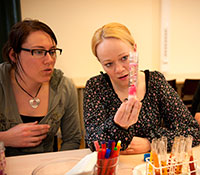
The larger bubbles of carbon dioxide gas then rise quickly to the surface of the oil, while smaller ones gather on the surfaces of the juice droplets, making these float upwards too. Once the gas is released at the top, the juice droplets sink again to the bottom where they pick up more gas from the reaction, and rise again. They also become a bit more alkaline each time, which we see as a change in colour back towards blue or purple.
See how many different colours you can get just by adding different amounts of lemon juice and sodium hydrogen carbonate to blueberry and/or cabbage juice.
Usually chemistry lessons are not part of primary-school education, especially in earlier years. This paper illustrates some novel and interesting activities and offers an alternative way to teach chemistry that any pupil could participate in and understand. I don’t think that many teachers in Cyprus include chemistry in the first three or four classes of the primary school education. This article could form the basis for changing this tradition and call on young students to participate in fun and inspiring lessons. It is important, however, that these activities are not used only as show-and-tell experiments. Teachers should be well prepared for the discussion that will follow. They should be prepared from the pedagogical perspective of the lesson. For example, the questions posed by the teacher, the discussion held among the pupils of the same group and the explanations that they develop (with the help of the teacher) is the most vital part of the experiment. These are not provided here, but are left to the teacher to prepare.
Christiana Th. Nicolaou, University of Cyprus